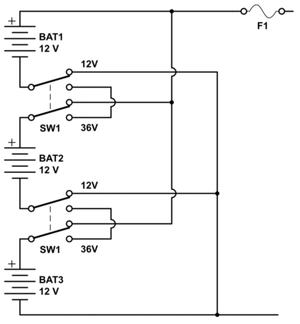James Bond kept tabs on the bad guys with a tracking display in the glove box of his Aston Martin. But the reality of dashboard navigation today, particularly if it involves both Bluetooth and GPS, isn’t so much like Goldfinger as it is like On Golden Pond. That is to say, Bluetooth GPS devices are cranky, lose track of their location with alarming frequency, and demand that you maintain Katherine Hepburn-like levels of grit and patience.
If you’re willing to put up with the shortcomings, Belkin and Hewlett-Packard each offer devices that add reasonably useful GPS capabilities to your Bluetooth-enabled Pocket PC. The $300 Belkin Bluetooth GPS Receiver is the smaller of the two; it’s a little bit bigger than a D-size battery. The $330 HP iPaq Navigation System is longer and wider, but with a trimmer profile; it’s comparable in size and shape to a small cell phone.
Both devices use nearly identical GPS software on the handheld (from Netropa). Once you’ve loaded the software, you use a PC-based installer to load the geographic data you want onto the handheld. Then you’re ready to hit the road.
The GPS devices connect with your Pocket PC device through Bluetooth. In both cases, the process is tricky and time-consuming. In our tests, we frequently had to make several attempts before establishing a successful connection, and the process often took more than five minutes.
In addition to establishing a Bluetooth connection, you also need patience while the receiver picks up the satellite signals it uses to determine its location. This frequently took a minute or more, although interference from trees or buildings could inhibit the process. Like other GPS receivers, both the Belkin and HP devices don’t work indoors.
Once established, the Bluetooth and GPS connections were fairly robust. We could place each GPS receiver on a dashboard or even in a pocket without losing the signals. Although Bluetooth is rated for distances of up to about 30 feet, in practice the connections worked best with less than 15 feet between the GPS receiver and the handheld — plenty of distance for most practical uses.
As you move, the display on your handheld is constantly updated with your location, direction, and speed. Although GPS is precise only to a few dozen feet, these devices accurately recognized our walking direction and speed after just a couple of steps. The map display is intuitive and easy to use — you can zoom in or out, pan the display, and view points of interest (such as ATMs, gas stations, and parks). Pick a destination and your handheld will give you directions audibly (a female voice tells you, “In 300 feet, turn left”) as well as visually.
Despite the gee-whiz factor, actually using these devices for navigation is less than ideal, particularly for driving. Unless you set your Pocket PC’s display to keep the backlight on permanently, the display keeps blinking off just when you need to look at it. You have to juggle two separate pieces of hardware, and when driving around corners, the GPS receivers have an annoying tendency to fly off the dash and disappear under the seats.
There are minor differences between the two devices. While both have nonskid rubber bases, the surface area of the rubber is larger on the Belkin, making it less prone to fly around. That, plus the Belkin’s smaller size and lower price, give it a slight edge. If you’ve already got a Bluetooth-enabled Pocket PC, it’s a fair alternative to a standalone talking GPS system, at about half the cost. -Dylan Tweney
SPECS:
Belkin Bluetooth GPS Receiver
$300
Weight: 3.2 ounces
Size: 1.5 x 2.8 x 1.2 inches
Specs: Bluetooth; rechargeable battery; wall charger; car charger
www.belkin.com
***
SPECS:
HP iPaq Navigation System
$330
Weight: 3.6 ounces
Size: 1.9 x 3.3 x 1 inches
Specs: Bluetooth; rechargeable battery; car charger
www.hp.com
** 1/2
Link: HP iPaq Navigation System and Belkin Bluetooth GPS Receiver
Link broken? Try the Wayback Machine.

